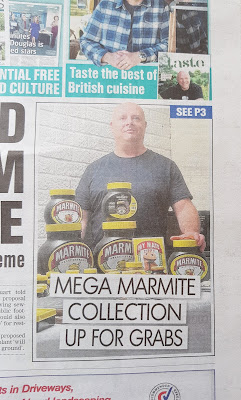Sale of Marmite Jars
Are you a lover or a hater?
Dear visitor,
This page is for the sale of Marmite products which belonged to my beloved late wife Laura. As some of you will know, she passed away from Cancer in 2020 at the age of just 45. More info about Laura can be found here.
Laura was a collector of Marmite memorabilia and wanted others to benefit from her incredible collection, which originally amassed over 300 items. Some pieces have now been sold and I'm now starting the next round of jar sales which you can have for exceptionally low prices.
In the picture below, you will see two sizes of box described as small and large with the items contained within the box written on there. Please note - I will not be splitting the boxes and all purchases are based on what is written on the side of the box. To keep things simple, a small box is priced at £10 and a large box at £20. However, if you purchase two boxes or more, you get all subsequent boxes after the initial one for half price!!! Carriage cost will be extra based on weight and sent by Royal mail using either a tracked and signed for method - or Special delivery whichever works out best as per the consignment.
To place your order, please email me on davidwalkerfj@gmail.com and put MARMITE SALE in the subject line. Include a clear description of the boxes you would like along with a full name, address and post code. I will then reply back confirming availability, along with the total price including the carriage and payment details. Once payment has been received I will ship out the items to you.
Please help me to keep the memory of Laura alive by owning a part of her special collection. She was a caring and wonderful person who always went out of her way to help others. If you have any questions then don't hesitate to get in touch where I will try and answer them as best I can. All jars are in extremely good condition with very little wear / tear / damage as they were originally stored in either a display cabinet, or set of drawers as you can see in the photo below.
Please note - due to their age, the contents of the jars should not be eaten. No responsibility will be accepted for anyone who attempts to do this. The jars are for decorative purposes only.
Thank you in advance.
David.


















































